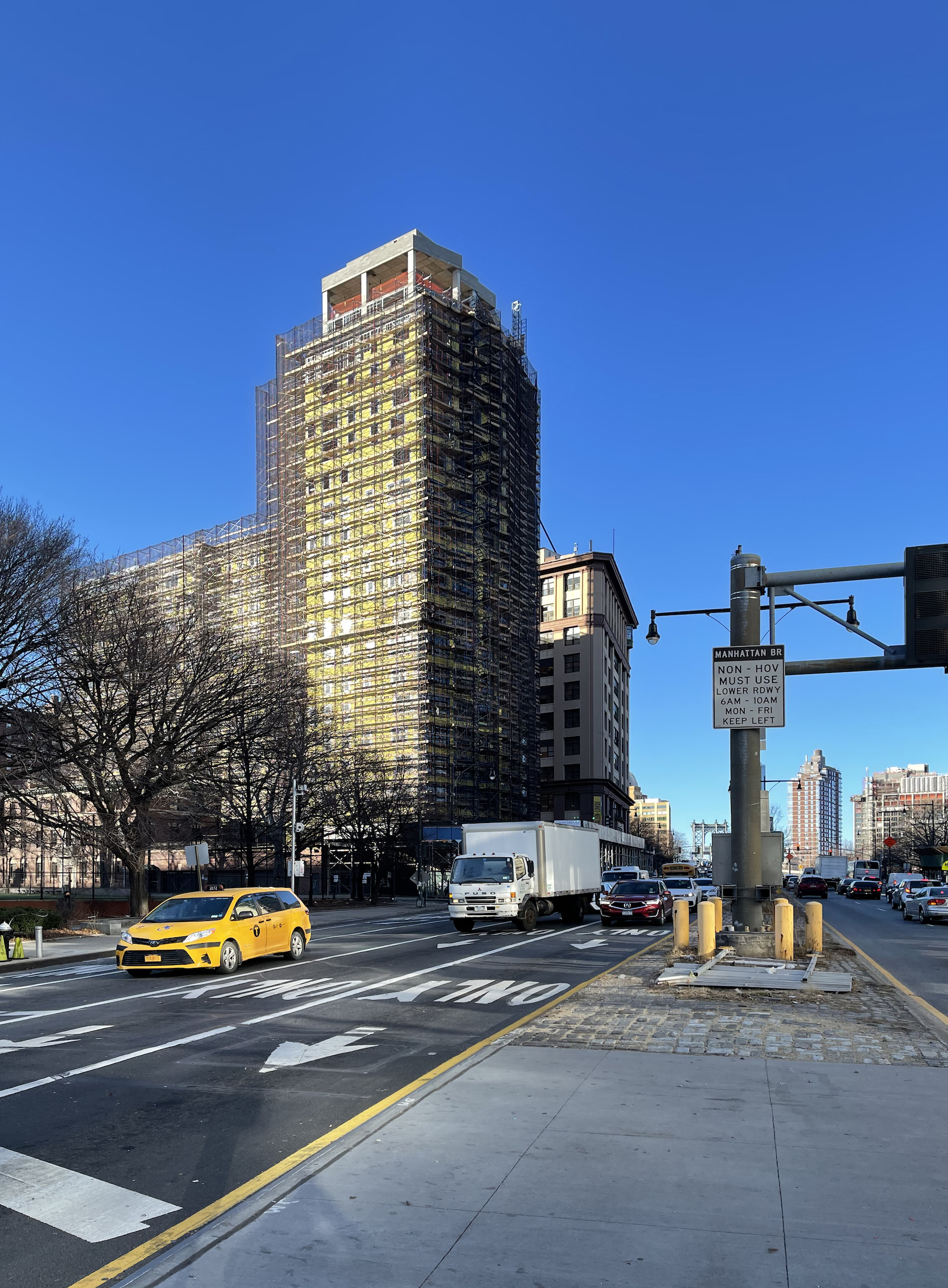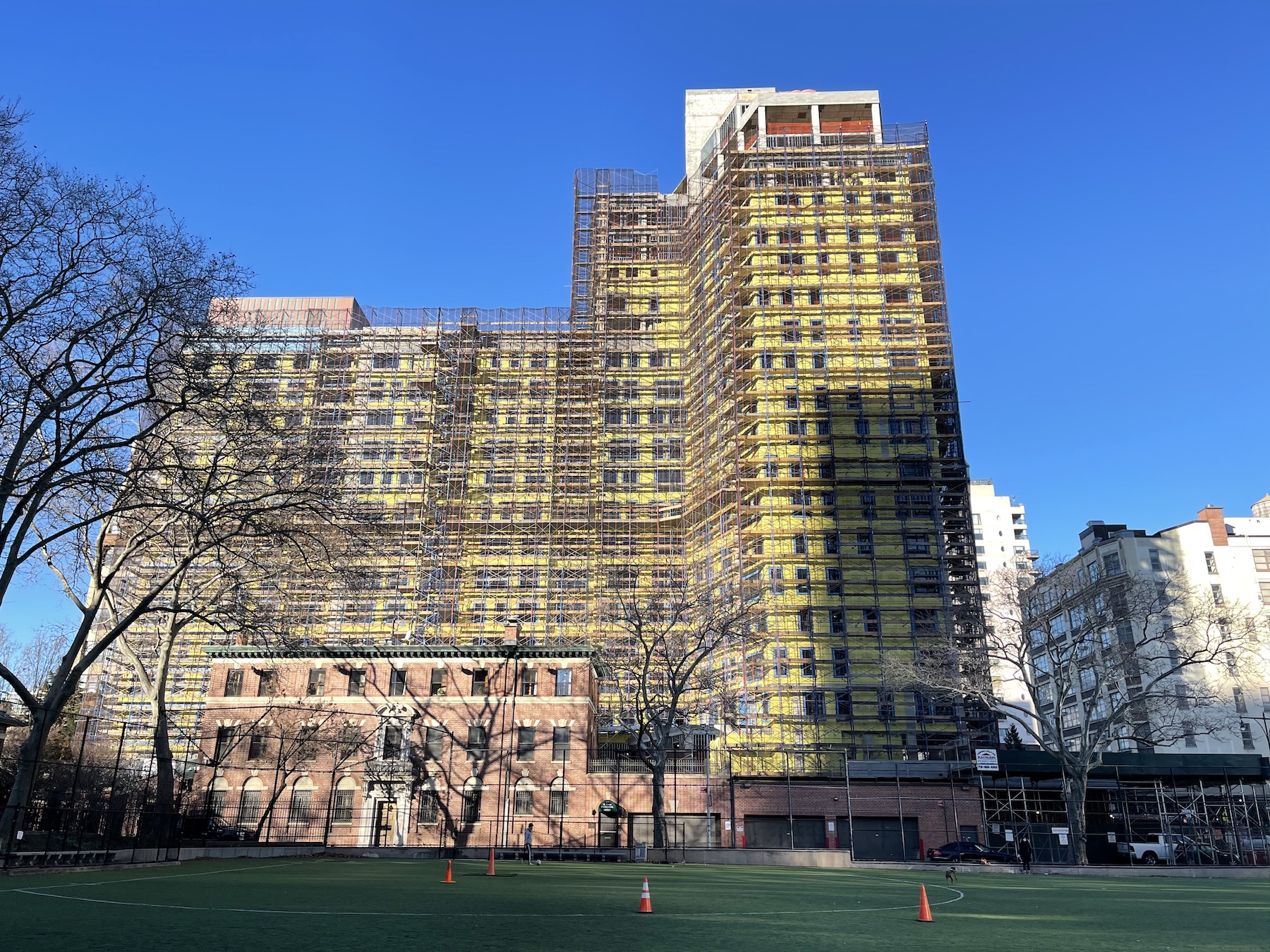Among its many legendary attributes, New York City is known for its rabid sports fans, foldable pizza slices, and wealth of arts and culture. But it’s the city’s iconic architecture that perhaps best defines its footprint I n the northeast. When Delshah Capital and OTL Enterprises selected a team to design and build a 20-story high rise in the bustling borough of Brooklyn, it was literally Go Big or Go Home.
The Challenge
The 211-foot stunner situated at 22 Chapel Street presented an exciting opportunity to build a towering structure to compliment the revitalization of downtown Brooklyn. Designed by CetraRuddy Architecture, the property is located at the south end of the Manhattan Bridge, presenting it with a high amount of exposure to admirers near and far.
Housed within its 167,000 square feet will be 180 residential units, retail space, and a community facility. Since the building needs to withstand the extremes of New York weather – including punishing rain and snow – a superior weather barrier system was a must. Additionally, the building exterior required a barrier material that would work well with metal panels and provide high levels of energy efficiency. That’s when two Georgia-Pacific innovative water-resistive barrier/air barrier (WRB/AB) solutions answered the call: DensElement® Barrier System and DensDefy™ Accessories.
Not Just a Square Box
The building’s southern-facing façade and tower were uniquely designed to allow for exceptional views and to flood the interior with natural light. “It’s not just a square box,” said Darren Glisan, senior project manager at Titanium Construction Services, the general contracting firm hired for the job. “The façade elevation is highly complex in that the slab edges do not align with one another at the east end of the building. That was a fun challenge,” Glisan continued.

Another notable part of the job was that DensElement Barrier System and DensDefy Accessories weren’t initially specified. The façade design originally called for porcelain tile and sheathing that was specifically designed for that material. However, the porcelain was later shelved for metal panels since they were more cost-efficient and easier to work with.
That’s why Willis Ting, project manager and senior associate at CetraRuddy Architecture, turned to DensElement Barrier System, which integrates gypsum sheathing with a water-resistive barrier and an air barrier, along with DensDefy Accessories to seal the building envelope. According to Ting, “The DensElement Barrier System (and DensDefy Accessories work) better with certain products – and metal panels are one of them. And, considering all the seams that have to be protected from the weather, we needed to choose the best (system) for the job.”
Thornton Tomasetti, the façade consultants and structural engineers, still need proof before moving forward. “Thornton Tomasetti are serious engineers. They know their stuff and they don’t compromise,” remarked Glisan. The team conducted a WUFI analysis, the industry’s most advanced analytical simulation of hygrothermic (the combination of heat and moisture) conditions in a building envelope. The results spoke for themselves, demonstrating that DensElement Barrier System with DensDefy Accessories was indeed the best water-resistive/air barrier for the job. Ting noted convincingly, “It’s a one-stop shop. (DensElement and DensDefy make) the design team feel secure that we’re handing off the right products to the construction team.”
Exceeding Sky-High Expectations
Once the build began, DensElement Barrier System and DensDefy Accessories were put to the true test. “You need to make sure the whole building is sealed the right way. By selecting the right (products), we know the building will not leak, is fully airtight, and the insulation will be protected,” said Ting.
Among the advantages of DensDefy Accessories are the simplicity and efficiency of installation, even in wet weather. DensDefy™ Liquid Flashing waterproofing, adhesive, and detailing compound seals rough openings, penetrations, joints, and seams. DensDefy™ Transition Membrane is a self-adhered, butyl-based membrane used on drift or control joints, vertical expansion joints, and gaps greater than 1” to ensure envelope continuity. “Together, they perform as though they’re a waterproofing membrane, and that simplicity is their greatest benefit,” said Glisan of DensDefy Accessories’ performance on the job.
While “time is money” is a figure of speech for some, for the team on a build, it’s what drives their business. Glisan went on to discuss how waterproofing materials have only gotten more complex, specifically referring to liquid-applied membranes, which often require installers to double-back to ensure the material specifications are being followed.
Another challenge when roll-on-specific applications are used is the material driving onto finished elements of the building, like windows and the floors below. DensElement Barrier System removed any worry about spending extra time on quality control.
The heightened level of durability and efficiency delivered by the Georgia-Pacific products was echoed by everyone contributing to the project. After using DensElement Barrier System and DensDefy Accessories for the first time, John Vennera, field supervisor at PG New York, remarked, “we’re closing the building up way quicker than normal, which allows the other trades to move along. And, obviously, any client would appreciate that.”
Mike Whitmore, the purchasing director at PG New York, not only said that the speed of the installation process cut labor costs, but also the two-in-one combination of sheathing and weather resistance for a set price from one company made purchasing faster and easier. “There were even (fewer) bills for scaffolding because the guys spent less time on it,” said Whitmore. “Combining the waterproofing and sheathing is good because when it comes to warranty time, you have one single source.”
DensElement Barrier System and DensDefy Accessories can be installed without damage in rain and even in New York’s winter weather. This helped streamline the installation and overall production schedule by allowing the window installers to move in quicker and, in turn, close the building faster so interior work could stay on schedule.
A product is only as good as the company standing behind it. From the development of innovative building materials to the distribution network making sure they arrive on time, Georgia-Pacific is proud to be part of Brooklyn’s newest landmark building. It’s been said that everyone in New York has a story; thanks to those who put their trust in us at 22 Chapel Street, we do, too. 20 stories, to be exact.
Related Stories
| Aug 11, 2010
SFI releases new sustainable forestry standard
The Sustainable Forestry Initiative has released a new standard. SFI 2010-2014 addresses climate change and bioenergy; strengthen unique SFI fiber sourcing requirements, which broaden the practice of sustainable forestry; complements SFI activities aimed at avoiding controversial or illegal offshore fiber sources, and embraces Lacey Act amendments to prevent illegal logging; and expands requirements for logger training and support for trained loggers and certified logger programs.
| Aug 11, 2010
Another steep decline in nonresidential construction activity projected for 2010
Despite signs that the overall U.S. economy is beginning to improve, nonresidential construction spending is expected to decrease by 13.4% in 2010 with a marginal increase of 1.8% in 2011 in inflation adjusted terms, according the American Institute of Architects' Consensus Construction Forecast. Commercial and industrial projects will continue to see the most significant decrease in activity. Thanks, in part, to federal stimulus spending, institutional building categories will fare better over the new year. BD+C, January 6
| Aug 11, 2010
WattStopper contributes freezer case occupancy sensor to DOE study
WattStopper has participated in a ground-breaking demonstration of solid-state lighting (SSL) technology combined with occupancy sensors in grocery store freezer cases. The project was supported under the U.S. Department of Energy (DOE) Solid-State Lighting GATEWAY Technology Demonstration Program. WattStopper contributed FS-705 Wide Angle PIR occupancy sensors to the project.
| Aug 11, 2010
Construction spending hits six-year low as employment declines in 324 of 337 cities
Construction employment declined in 324 out of 337 metropolitan areas over the past year as spending on construction projects dropped by over $137 billion in November to a 6-year low of $900 billion, according to a new analysis by the Associated General Contractors of America of federal figures released recently.
| Aug 11, 2010
New data shows low construction prices may soon be coming to an end
New federal data released recently shows sharp increases in the prices of key construction materials like diesel, copper and brass mill shapes likely foreshadow future increases in construction costs, the Associated General Contractors of America said. The new November producer price index (PPI) report from the Bureau of Labor Statistics provide the strongest indication yet that construction prices are heading up, the association noted.
| Aug 11, 2010
Underwriters Laboratories, ICC Evaluation Service announce dual evaluation and certification program for building products
Underwriters Laboratories (UL), the leading product safety testing organization, and ICC Evaluation Service, Inc (ICC-ES), the United States' leader in evaluating building products for compliance with code, today announced a partnership that will provide the building materials industry with a Dual Evaluation and Certification Program for building products.
| Aug 11, 2010
The New Yorker's David Owen: Why Manhattan is America's greenest community
David Owen is a staff writer at The New Yorker and the author of 14 books, most recently Green Metropolis: Why Living Smaller, Living Closer, and Driving Less Are the Keys to Sustainability, in which he argues that Manhattan is the greenest community in America. He graduated from Harvard and lives in Washington, Conn., where he chairs the town planning commission.
| Aug 11, 2010
Economic conditions to cause drag on cement consumption
The conditions facing the construction industry are likely to remain weak for another year or more, causing a drag on cement consumption, according to the most recent economic forecast from Skokie, Ill.-based Portland Cement Association (PCA).






